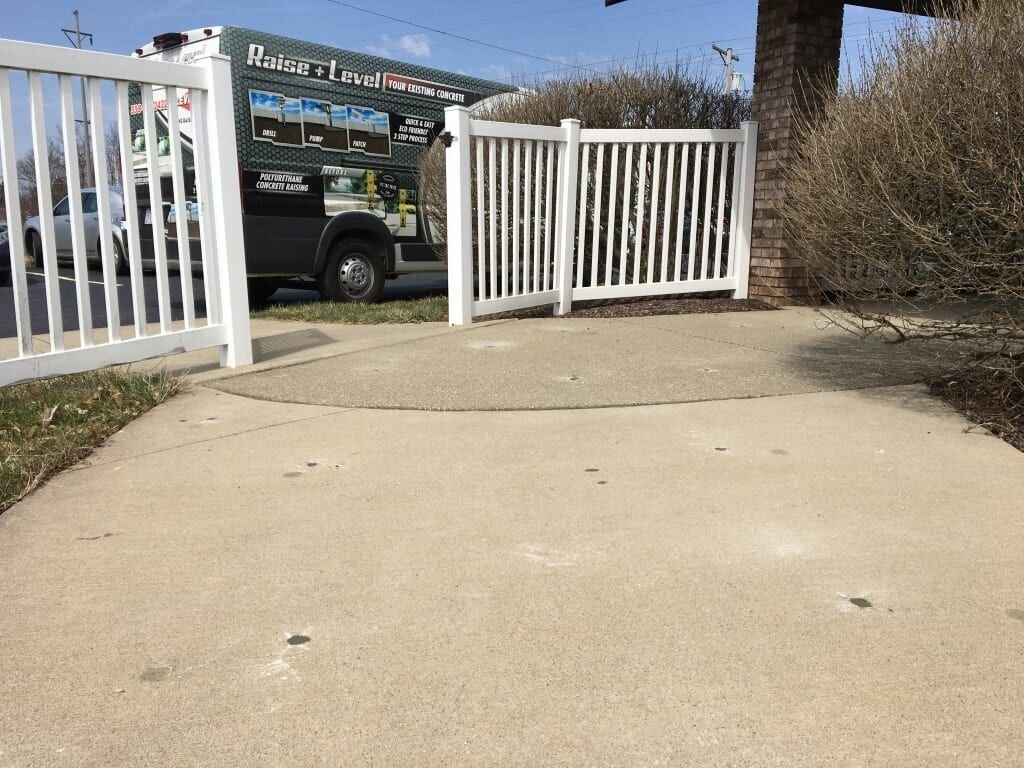Top 4 Best Techniques to Keep Your Concrete Looking New
Concrete is one of the most durable materials out there. But like anything constantly exposed to the elements, it gets beat up, discolored, chipped, and cracked.
But wear and tear are expected, so when it happens, don’t despair. Instead, check out the top 4 best techniques to make your old concrete look new.
Repair your cracked concrete
Like any rigid material, concrete can crack. A small crack can grow larger when heavy objects roll over it, and when water freezes in the crack and expands. So it’s important to fix cracks before they grow.
Repairing cracks in concrete is easy. First, clean the area. Make sure the crack and surrounding area are clear of debris. If the crack is less than ¼ inch, use a concrete and mortar caulk. You can find a list of expert-approved caulks here. Most caulks are polyurethane, so they’re flexible, and won’t crack or split.
If the crack is more than ¼ inch, use concrete patching material. Brands like Quikrete, Sika, and Sakrete make concrete patching materials. Whichever brand you choose, follow the instructions closely. You can find these products at your local hardware stores.
Pro Tip: Wait until after the last freeze of the season to fix concrete cracks. If you don’t wait, water can sneak into the repaired crack, freeze, and reopen the crack. If you live in Northeast Ohio, wait until May.
Resurface your chipped concrete
Chipped concrete happens with normal wear and tear, especially in high-traffic areas. Look at any Ohio roadway, and you’ll see plenty of chips. With time, small chips turn into bigger and deeper divots. These can turn into horrible potholes that ruin your car’s tires.
Luckily, you can fix chipped concrete with a concrete resurfacer. Resurfacing a walkway or driveway requires more skill and finesse than patching a crack. But it’s still doable for non-experts.
First, thoroughly clean the area you plan to resurface. For best results, use a power washer to remove, dirt, debris, oil, and grease.
Once the area is dry, cover any control and expansion joints. You don’t want to fill these in. The concrete resurfacer dries quickly, so mark off the area in smaller sections.
Next, fill in deep divots and wide cracks. Allow the caulk or concrete patch to dry before applying the resurfacer.
Read the directions for your concrete resurfacer carefully. You’ll want to have a helper on hand to prepare the next batch when you finish applying the current batch. Then you can feather in each section for a seamless finish.
For best results, apply concrete resurfacer when you expect at least 8 hours of dry weather, 50 degrees Fahrenheit or higher. Normally, a concrete resurfacer requires 6 hours of dry time before permitting foot traffic and 24 hours before vehicle traffic.
Stain your discolored concrete
Maybe your concrete is discolored by dirt, oil, paint, or rust. Or maybe you just want a change of color to compliment your home. Either way, staining is a great solution to these problems.
First, choose a concrete stain. The two main groups of stains are acid-based and water-based. Acid-based stains are permanent and contain more chemicals than water-based. However, water-based stains have more color options available, and they dry quicker.
No matter what stain you choose, the concrete surface needs to be thoroughly cleaned. Any debris or leftover stain can prevent the stain from adhering to the concrete, which results in the uneven coating, chipping, and peeling.
Splashing can occur when staining, so tape and cover any surrounding areas that you don’t want stained.
See your specific product for instructions on applying the stain. Instructions differ depending on product and application method.
Seal and protect your concrete
Sealing concrete not only makes the surface look newer but protects your concrete as well. There are different types of sealers to choose from, so do your research to find the one that accomplishes your unique goals.
To apply a concrete sealer, always read the instructions for your specific product. But just as you would to stain concrete, begin by cleaning the surface and removing any debris and existing sealer.
Depending on how smooth or porous your concrete is, you may need to open the concrete with an etching solution to help the sealer adhere.
Then apply a thin coat of the sealer using a 1 inch (or longer) nap roller, and allow it to dry. For edges and tight spots, use a paintbrush.
Next, apply the second coat and give the surface ample time to dry.
Concrete doesn’t have to look old as it ages. With these 4 techniques, you can give your driveway, walkway, stoop, or patio a brand new makeover.


